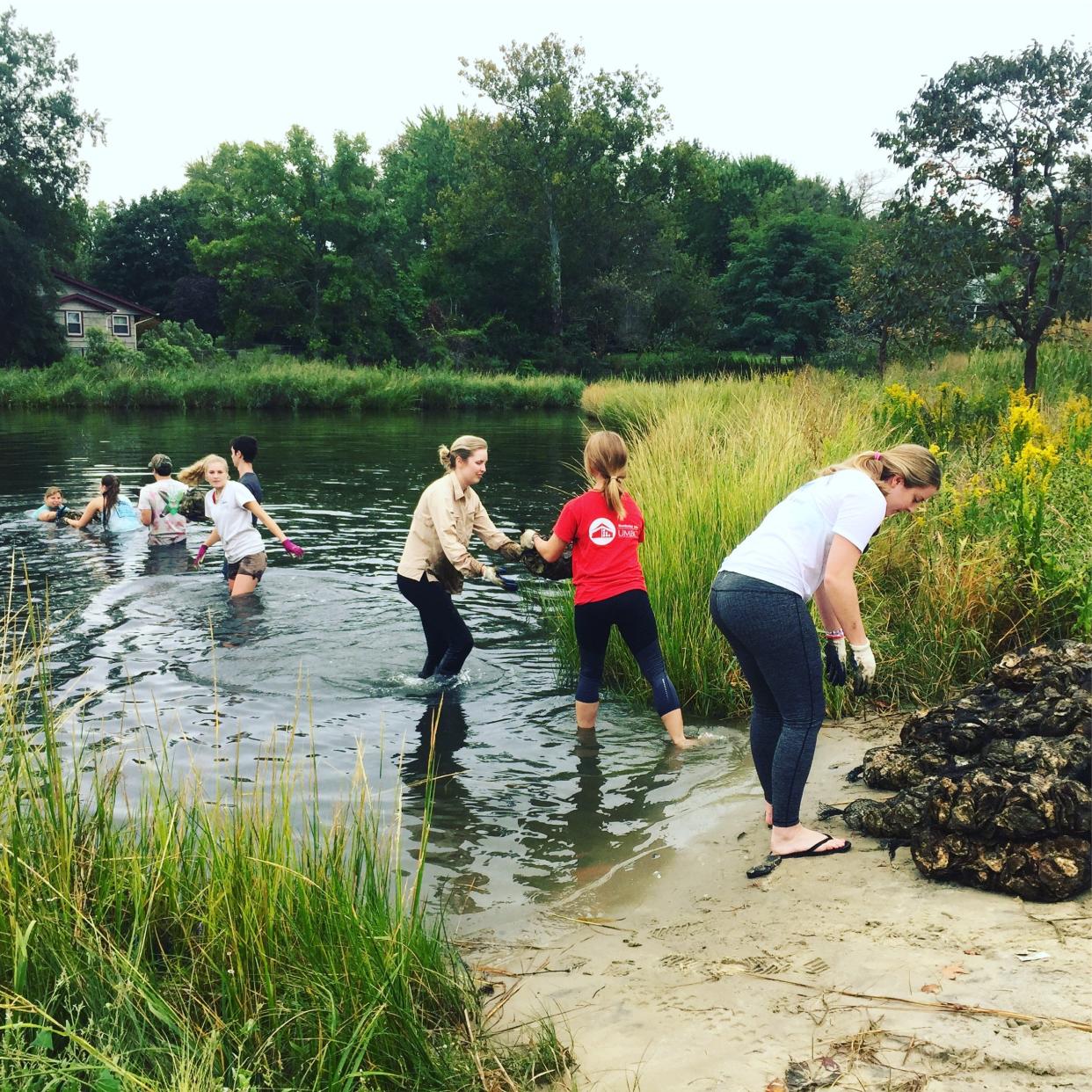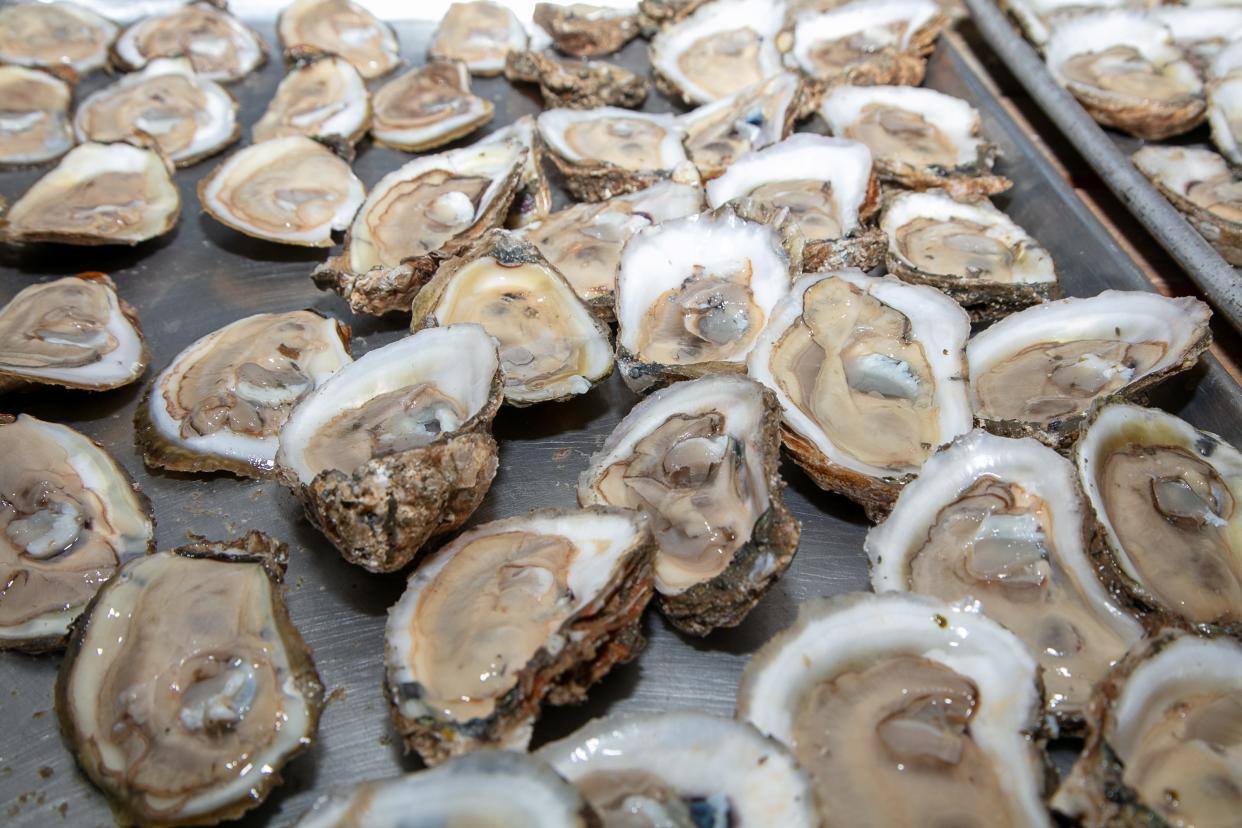The world is indeed your oyster at the beach in all kinds of ways
Just when you thought seafood production was on the wane comes an encouraging announcement that 6 billion, that’s a “b” as in “bivalve,” new oysters have been added to the Chesapeake Bay since 2017.
In addition, the Chesapeake Oyster Alliance, not to be confused with North Atlantic Treaty Organization, is confident of reaching its goal of 10 billion new oysters by 2025, which would be next year by my calculation.
While this may be good news for the Bethany, Henlopen City and Lewes Oyster Houses, the numbers are such that one can foresee a time in the not-too-distant future when every private home could legitimately claim the “oyster house” designation as well. The same might be true of local churches too, although I imagine they would exclusively serve oysters of the Sweet Jesus variety.
Are oysters really an aphrodisiac? Don't tell Pfizer

Returning to the idea of plentiful oysters in the home, it has long been held that oysters are an aphrodisiac, defined as a food, drink or drug that stimulates sexual desire.
Recently, a professor at the University of Delaware’s School of Marine Science & Policy, located in suburban Lewes, noted in Delaware Today that there is some evidence to support this claim. He is quoted in the same article as saying: “Scientists have found that zinc, which is high in oysters, improves sexual function.”
Were this scientific theory to gain widespread acceptance and validation, it undoubtedly would negatively impact the value of Pfizer stock, the pharmaceutical corporation that makes Viagra.
In the same vein, consuming oysters could be of special interest in coastal retirement towns such as Lewes and Rehoboth Beach, where, according to Travel & Leisure magazine, the average age of residents is 66 and 64 respectively.
Incidentally, the possible efficacy and legality of eating oysters as an aphrodisiac is one of the few reproductive rights on which both Democrats and Republicans agree.
City's hotel/convention center plan: Will Salisbury get new downtown hotel and convention center? Here's latest update
Oysters are devoured by thousands in many forms

Oysters can be served (in alphabetical order) baked, broiled, fried, grilled, poached, smoked, steamed, and, of course, raw on the half shell, and consumed alone, with family and friends, or in a crowd.
At the annual Georgetown Oyster Eat, they are steamed and devoured by the thousands. The Eat is the chief fundraising event of the similarly named (Georgetown, not Oyster) Fire Company, where some 800 people annually gather to enjoy food and fellowship.
As stated on the company’s website, the event “has been recognized by the United States Congress for its historical and cultural significance.” Given recent history, it’s good to know that that legislative body has done something so worthwhile.
According to a local biweekly that publishes all the news that fits to print, the shucked oysters at the Eat are served paired with oyster crackers and doused in horseradish and/or hot sauce.
And speaking of hot sauce, the Delaware Sauce Company of Seaford has won several accolades since its founding in 1988, including Screaming Mi Mi Awards at the New York City Hot Sauce Expo. (Trust me on this.) Possibly most pertinent to our oyster interests is their private label Shuckin’ Sauce, which they make for the restaurateurs at SoDel Concepts.
But I digress.
Baltimore bridge collapse: Maryland lawmakers launch effort to aid workers impacted by Baltimore bridge collapse
Aw shucks, oyster competitions are heating up all around
Last October, the US National Oyster Shucking Championships were held at the annual Oyster Festival in St. Mary’s County, Maryland. This was the 57th time this event, or a variation of it, was held, numerically tying it with the number of Heinz varieties.
The winner was Honor Allen, who was honored (what else?) with his share of the $1,800 prize money. He shucked the required two dozen oysters in a festival record time of 1 minute, 57.81 seconds. That’s more than one every five seconds, a display of manly (or manual) dexterity rarely seen in the home kitchen.
Incidentally, Isabella MacBeth, not related to the Shakesperean Lady with whom you became acquainted in high school, captured the championship in the women’s division for the fourth time in a row.
While shucking speed is the most important contest element, “presentation” is also a factor. Put differently, should the shucker’s knife inadvertently transform a bivalve into a trivalve, seconds will be added to their time because of it. And this is a food-related activity in which you do not want to go back for “seconds.”
All this shucking, whether it be in Maryland or Delaware, creates the need to deal with the oyster shell “leftovers,” somewhat like the predicament faced in "The Holdovers," the Oscar-nominated film.
Commendably, the Delaware Center for the Inland Bays (CIB) has developed its “Don’t Chuck Your Shucks Program,” which collects empty oyster shells from area restaurants. It then recycles them as foundation and building material for its research-related oyster reefs. So, CIB complements the Farm to Table movement with its own Restaurant to Reef initiative.
I praise the CIB leadership for this highly laudable undertaking, to which they might humbly reply: “Aw shucks.”
Mike Berger is a freelance writer and retired university administrator with a home in Lewes. Contact him at edadvice@comcast.net.
This article originally appeared on Salisbury Daily Times: The world is indeed your oyster at the beach
